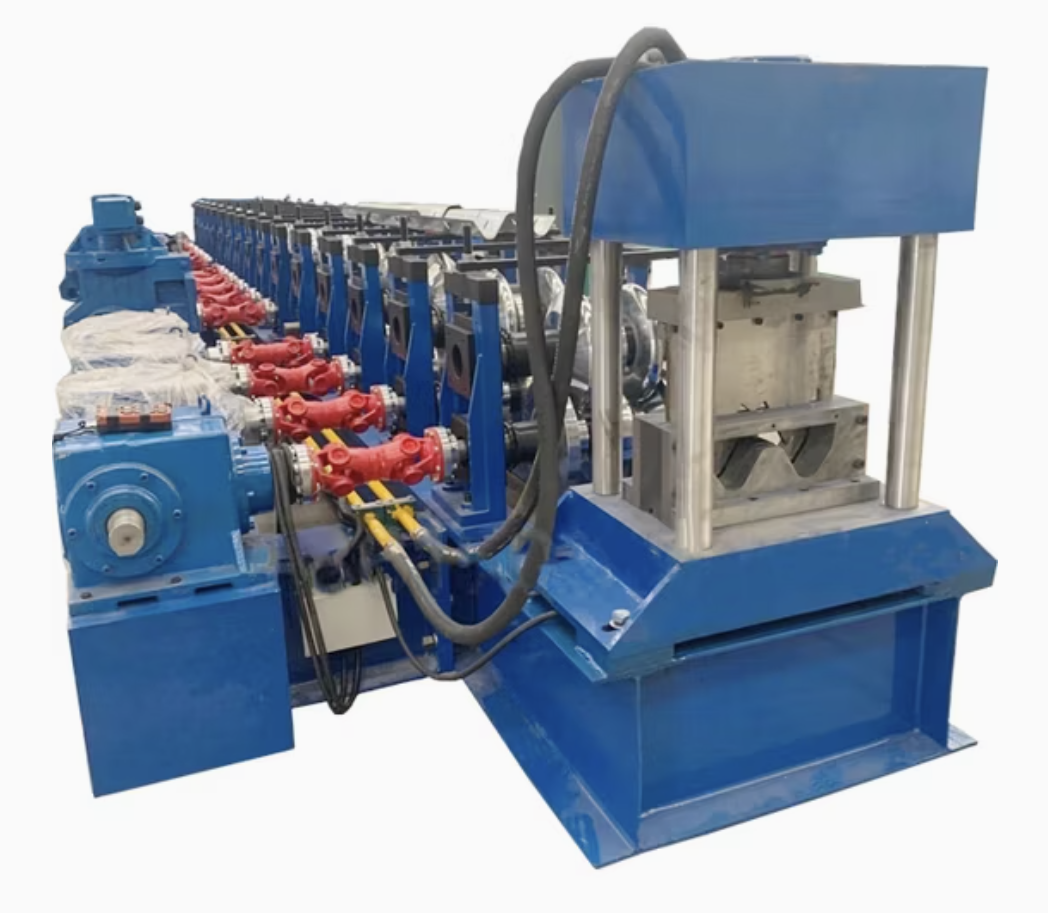To express an interest in this machine please submit the form below.

Not Sure What Machine You Need?
Select Your Profile, We'll Match It
Choose your desired profile drawing, and let Machine Matcher connect you with the best roll forming machine tailored to your needs.
Browse Profiles


Guardrails are essential in highway safety, providing crucial impact resistance to protect vehicles and pedestrians. A Guardrail Roll Forming Machine enables the efficient production of these safety structures, which need to meet precise standards for strength, durability, and flexibility. In this blog, we will explore the features and specifications of guardrail roll forming machines and answer common questions about their operation, maintenance, and use.
The Guardrail Roll Forming Machine is designed to produce high-quality highway guardrails and other safety barrier profiles. This machine operates by feeding a coil of steel or other metal through a series of rollers that gradually shape it into the guardrail profile. The forming process is continuous, allowing for high-speed production with minimal waste.
Key Features:
Q1: What materials are commonly used with guardrail roll forming machines?
Guardrail roll forming machines are commonly used with galvanized steel, which provides corrosion resistance essential for outdoor safety applications. Other metals, such as aluminum, may be used depending on the desired properties.
Q2: How does the machine handle different profile specifications?
The machine can be adjusted for different widths, heights, and thicknesses. The PLC control allows operators to switch between W-beam and Thrie-beam profiles by recalibrating the roller settings.
Q3: What are the safety features included with these machines?
Guardrail roll forming machines are equipped with safety guards and enclosures, emergency stop buttons, and automated cut-off systems that halt production if any irregularities are detected.
Q4: How long does it take to install a guardrail roll forming machine?
Installation times vary but typically range from a few days to a week, depending on the machine’s complexity and the production facility’s preparedness.
Q5: What is the expected lifespan of a guardrail roll forming machine?
With proper maintenance, a guardrail roll forming machine can last 10-20 years, as it is designed for heavy-duty operations.
Q6: Can the machine be customized to meet specific production needs?
Yes, manufacturers offer customization options such as additional punching and notching stations, different cutting mechanisms, and variable profile dimensions.
Q7: Are there any specific regulatory standards for guardrails?
Yes, guardrails need to meet local and international road safety standards, which define profile dimensions, material strength, and impact resistance.
Q8: What factors affect the machine’s production speed?
Production speed can be influenced by material thickness, profile complexity, and any additional processes like punching or cutting. Thicker materials and more complex profiles may reduce speed.
Q9: What is the maintenance schedule like?
Routine maintenance includes daily checks for debris, weekly lubrication of rollers and moving parts, monthly alignment and calibration checks, and bi-annual electrical system inspections.
Q10: How do I ensure consistent quality with guardrail profiles?
Consistent quality is achieved by maintaining roller alignment, following a strict maintenance schedule, and calibrating the PLC settings to match profile specifications.
Conclusion
A Guardrail Roll Forming Machine is a valuable investment for companies involved in infrastructure and road safety. By understanding the machine’s specifications, maintenance needs, and production capabilities, businesses can produce high-quality guardrails that meet industry standards. For more information on selecting the best machine for your requirements, consult a roll forming expert.
Copyright 2026 © Machine Matcher.